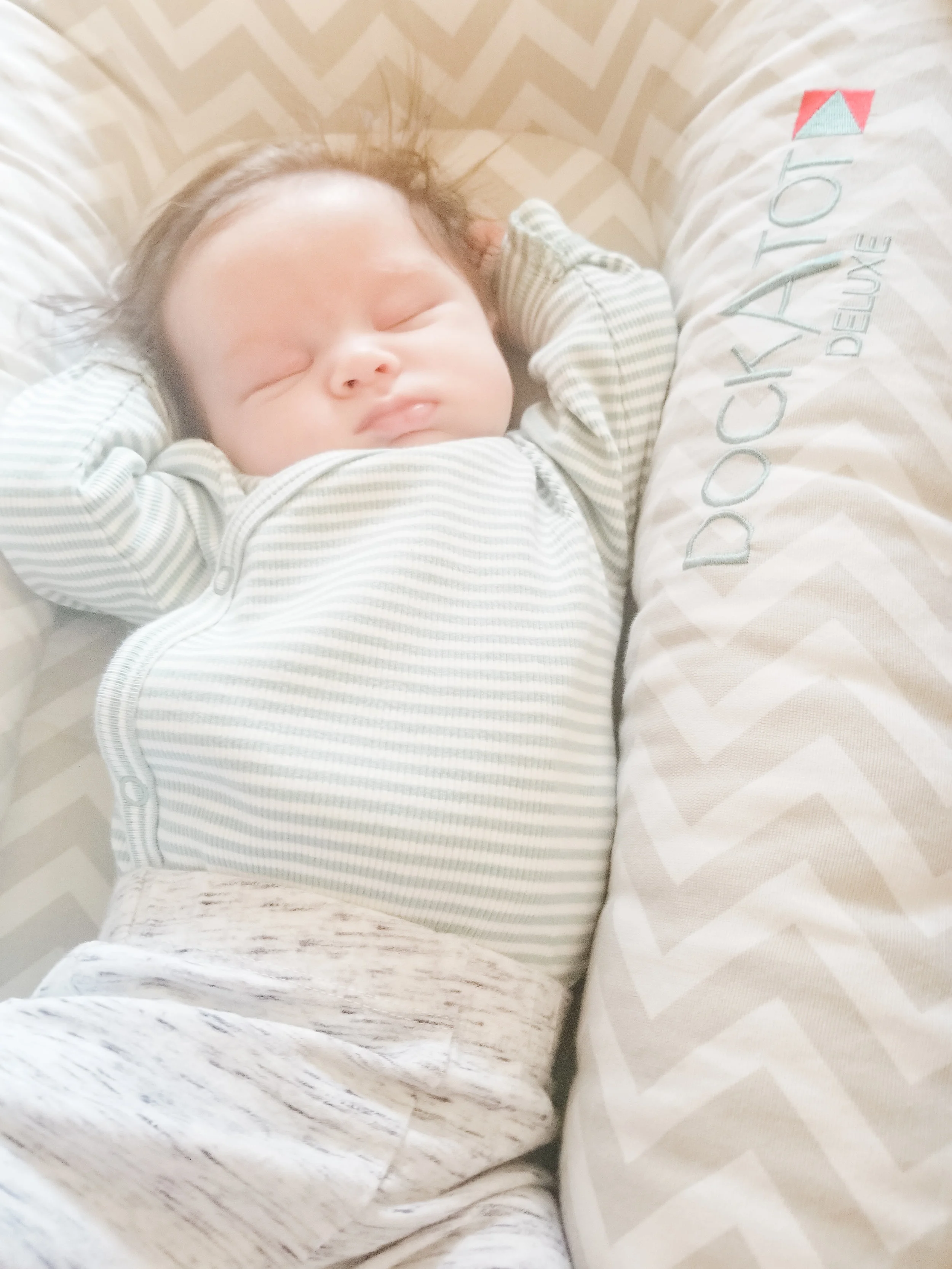As a mother, I understand how sleep products can sometimes feel like a lifesaver when it comes to getting your baby to sleep (I’ve been there!). However, it's essential to be aware that these products are not intended for unsupervised sleep and can pose safety risks that can prove fatal. Recent news reports have highlighted cases of infant deaths linked to certain sleep products that have been recalled. Therefore, it's crucial to choose safety over convenience when it comes to your baby's sleep.
But fear not, you can have both a safe sleep environment for your little one and maintain your sanity. It is possible to create a safe sleep space that replicates the comfort of the womb without relying on sleep products. Remember, nothing is worth jeopardizing your baby's safety, and I promise that we can find a win-win solution without taking any unnecessary chances.
So, which products are considered unsafe for sleep? According to the American Academy of Pediatrics (AAP), the following items should not be used for unsupervised sleep:
Doc-a-tot/Snuggle me/loungers
Swings
Rock n Play
*Anything inclined or with bumper sides
Instead, babies should always sleep on separate, flat, firm surfaces with no loose bedding or bumpers. Their underdeveloped muscles can cause their heads to fall forward during sleep, potentially obstructing their airway (called positional asphyxiation). Bumpers or cushioned sides can result in suffocation and risk strangulation.
If your baby is currently sleeping in one of these products, don't worry. I can show you how to gently wean them off these items, giving you peace of mind.
Together, we can work on helping your baby feel comfortable and secure in their safe sleep space.
Whether you choose to co-sleep or have your baby sleep in a separate crib, safety should be your top priority. Co-sleeping, which involves sleeping in the same room as your baby, is different from bed-sharing, where the baby sleeps in the same bed. Please consult the AAP and the Public Health Agency of Canada's safe sleep guidelines for a comprehensive list of safe sleep practices.
Here are three easy ways to transition your baby from sleep products to their crib:
Stick to your regular bedtime routine to help your baby wind down and prepare for sleep. Start at bedtime or during the first nap of the day when the sleep drive is highest.
Place your baby in the crib or bassinet and use soothing techniques to help them settle. *Contact me to discuss which techniques will work best for your baby's age, temperament, and comfort. Try to keep your baby in the crib for as long as possible during the first night.
If your baby has trouble settling in the crib initially, gradually increase crib time each night until they sleep the entire night in the crib.
If any of the sleep products you are using get recalled (some are), you will need to wean your baby faster. In such cases, I can show you how to gradually reduce rocking or other soothing techniques to help your baby settle in the crib independently.
A few tips to aid in the transition:
For babies transitioning from the Snuggle me, place them horizontally in the crib to mimic the sensation of being enclosed. Use a sleep sack for added comfort (avoid swaddling if your baby can roll).
Initiate soothing techniques in the crib, such as patting, shushing, or singing, and gradually reduce them over time as your baby becomes more comfortable.
If your baby is over six months old, consider introducing a lovey or pacifier (if they can replace it on their own) to help them self-soothe.
Remember to be patient throughout this process, as babies learn through repetition. With consistent efforts, your baby will adapt to the new sleep cues.
While your baby may fall asleep only in certain products, it's best to have them sleep in a safe sleep space, especially at night when you might doze off. Your child's health and safety should always take precedence over convenience. Sleep can still happen without these products and I can show you how but we will need to get your a sleep plan that is based on age, temperament, association and your comfort.
If you need age-appropriate sleep solutions for your baby, I'm here to help. Share your goals, and let's create a plan that allows you and your baby to feel rested and removes the worry of them not being safe.
Your Pediatric Sleep Consultant,
Lily

















